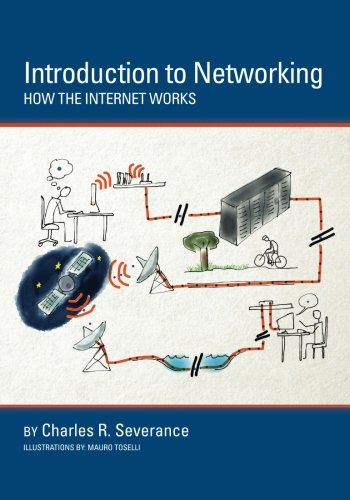
Introduction to Networking: How the Internet Works
by Charles Severance
Publisher: net-intro.com 2015
ISBN/ASIN: 1511654945
ISBN-13: 9781511654944
Number of pages: 119
Description:
This book demystifies the amazing architecture and protocols of computers as they communicate over the Internet. While very complex, the Internet operates on a few relatively simple concepts that anyone can understand. This book was written for everyone -- no technical knowledge is required.
Download or read it online for free here:
Download link
(1.6MB, PDF)
Similar books
 Bulding the Gigabit City
Bulding the Gigabit Cityby Craig Settles - Smashwords
Building the Gigabit City helps you: navigate past the hype about gigabit networks; understand what super-fast Internet access can and cannot do to improve your community; do effective needs analysis; and plan effective broadband strategy.
(9680 views)
 Connected: Your Complete Guide to Home Networking
Connected: Your Complete Guide to Home Networkingby Matt Smith - MakeUseOf
Home networking doesn't always work as simply as it should, and while every company is making efforts to simplify it, not all attempts have been successful. This guide outlines everything you need to know to manage your own home network.
(16870 views)
 An Introduction to Computer Networks
An Introduction to Computer Networksby Peter L Dordal - Loyola University Chicago
A free general-purpose textbook about computer networking, complete with diagrams and exercises. It is suitable as the primary text for an undergraduate or introductory graduate course in computer networking, or as a supplemental text ...
(17460 views)
 Communication Network Analysis
Communication Network Analysisby Bruce Hajek
This text describes the most popular analytical techniques for design and analysis of computer communication networks, with an emphasis on performance issues. Written for the graduate course Communication Network Analysis.
(18793 views)